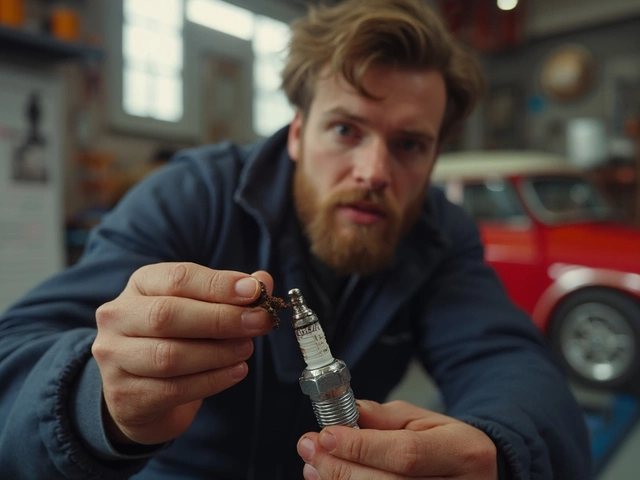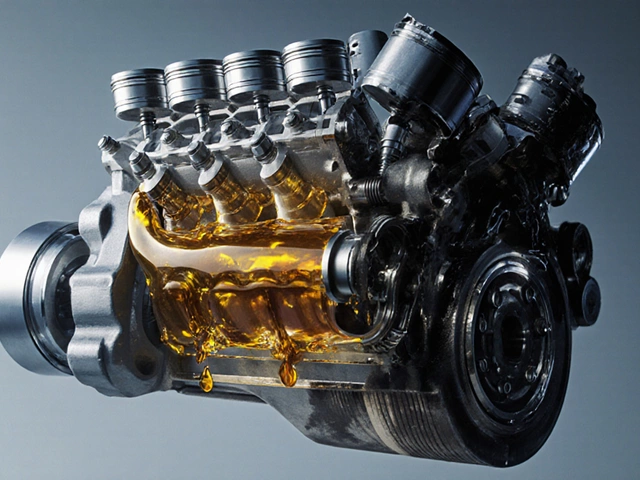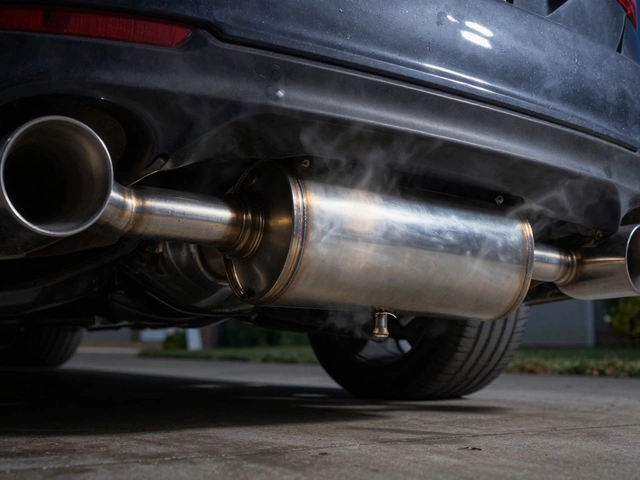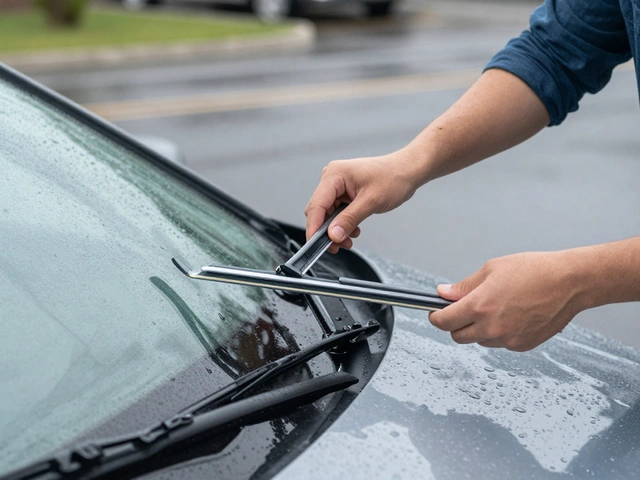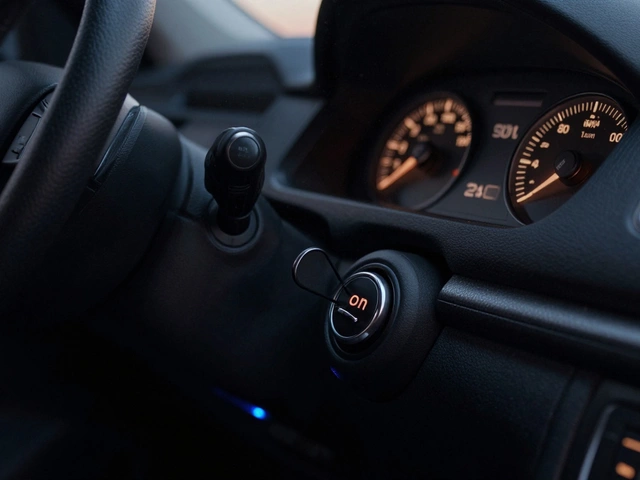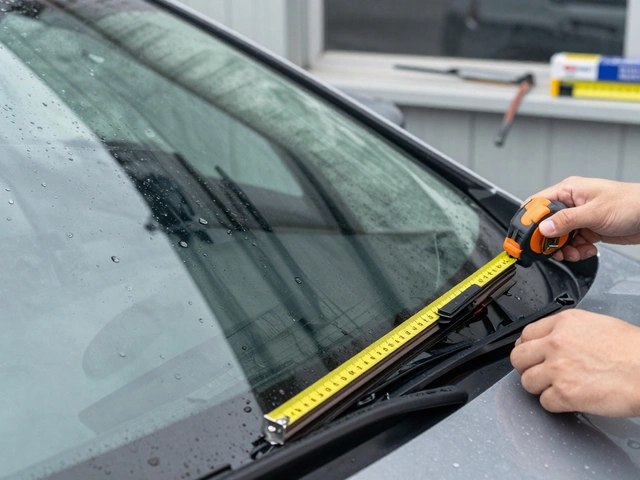Picture this: you're running late for work, traffic's not moving, radio's playing your favourite tune... and then, steam starts hissing from under your bonnet. Absolutely not how you want to start a Monday, right? Radiators might seem boring, but when they fail, there's no ignoring them. Loads of people think cooling issues always point to something big in the engine, but a dodgy radiator can be the sneaky culprit behind tons of car headaches. Ignore the signs, and you'll go from an easy fix, right to a full-on engine meltdown that’ll punish your wallet.
What Exactly Does a Radiator Do?
At its heart, a radiator is all about keeping things chilled—specifically your engine. Your car turns fuel into motion, but as a side effect it also turns a lot of it into heat. Too much heat for too long and your engine starts to cook itself alive. Here’s where the radiator steps in: it takes the hot coolant from the engine, cycles it through a bunch of thin metal tubes (called 'cores'), lets air flow through to suck out the heat, and then sends cooler liquid back. All this happens on repeat, every drive, all so you don't end up stranded by a boiling engine at the lights.
Cool fact: A healthy car engine runs around 90 to 105°C, but without the radiator, those temps can shoot up to over 150°C fast—that’s warped metals and ruined gaskets territory. Even in famously rainy Manchester, cooling systems work overtime in city traffic. And it isn't just the engine at stake. Overheating can wreck sensors, rubber hoses, and even your transmission if things get wild enough.
Modern radiators are often made from aluminium with plastic end tanks. This combo is lightweight and great at managing heat, but age or neglect can still wreck them. Limescale, rust, or even the odd flying rock can poke holes in your peace of mind. Plus, the UK’s love for grit and salt in winter means extra corrosion risk. You can check out the differences in common radiator materials in this table:
| Radiator Material | Pros | Cons |
|---|---|---|
| Aluminium | Lightweight, good heat dissipation, corrosion-resistant | Prone to cracking, harder to repair |
| Copper/Brass | Excellent heat transfer, repairable | Heavier, more likely to corrode |
| Plastic tanks | Cheap, light | Can split with age/heat |
So, if the radiator's this important, missing the signs isn't just inconvenient—it’s flirting with disaster on the daily commute. Spotting issues early is cheaper and way less humiliating than calling for roadside rescue on a rainy Tuesday.
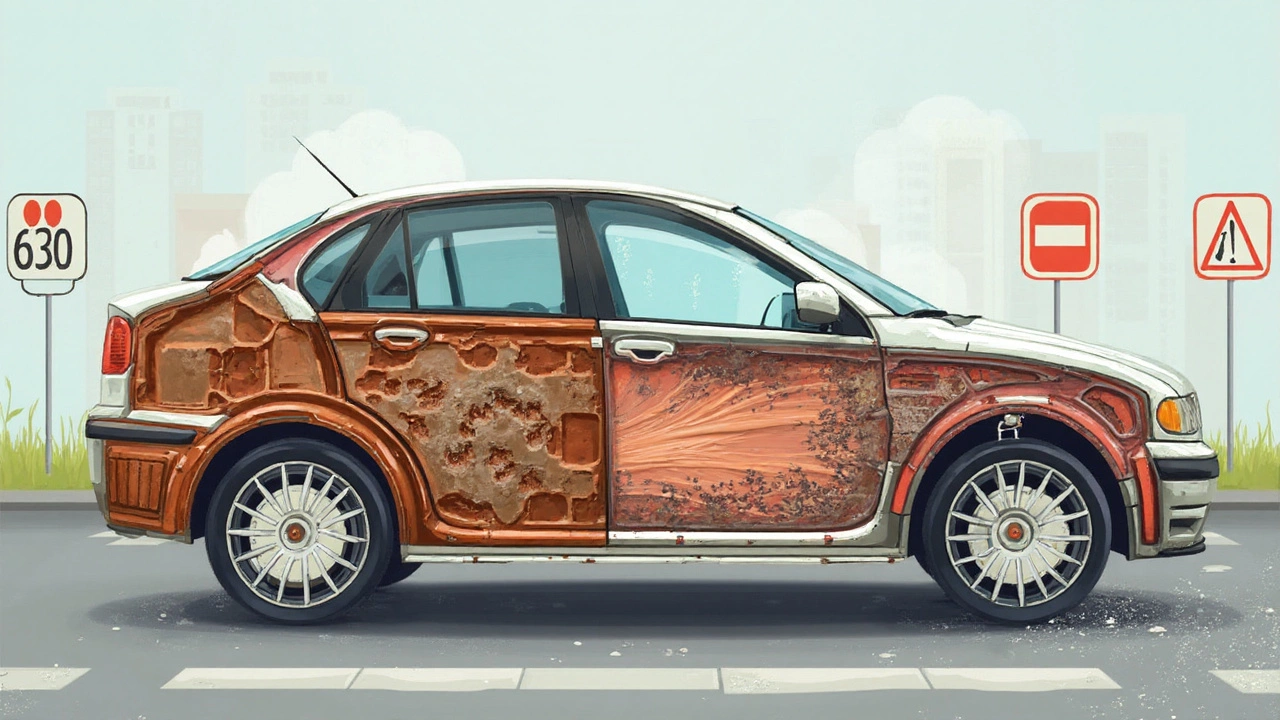
Warning Signs Your Radiator’s in Trouble
The good news? Bad radiators usually drop hints before they give up. Some signs are obvious; others are like finding a dodgy pint in a busy pub—easy to miss at first, but with a nasty aftertaste. Let’s go through symptoms you can actually spot in real life, not just when reading a technical manual.
- Car Overheating or Running Hot: If you’re glancing at the temp gauge and it’s stuck higher than normal, don’t brush it off—this is the number one warning. Sometimes it’ll creep up in motorway traffic or after a short drive. Some newer cars even flash a warning before it gets too serious, so don’t wait for steam to appear.
- Heater Not Working Properly: Crank up your car’s heater and you’re just getting lukewarm air? Could be air in the system—or the radiator's not moving coolant efficiently.
- Low Coolant Levels: Noticed you’re topping up coolant more often? Could be a leaking radiator or a cracked tank somewhere you can’t see straight away.
- Puddles Under the Car: See green, orange, or pink fluid underneath your car after parking? It’s almost always from the radiator or a hose connected to it. Coolant feels slippery, and usually smells sweet—don’t taste it, but if you see it, suspect a leak.
- Discoloured or Sludgy Coolant: Pop the cap (once the engine is cold, never hot), and if what you see isn’t clear, bright, or looks like muddy hot chocolate, there’s rust or gasket trouble. That gunk blocks up the radiator’s cores, suffocating its cooling ability.
- Visible Damage: Open the bonnet—do you see bent fins, green crusty stuff, or white deposits on the radiator? Even a stone hitting the front in Manchester’s rain can pierce a tiny hole that turns into a mess after a few months.
- Steam or Sweet Smell: A sweet, syrupy smell—or worse, actual steam—coming from under the bonnet is a dead giveaway, especially after a short trip. Stop and check before the engine boils over.
People sometimes ignore the early symptoms because the car ‘still runs fine’. But according to a 2023 UK AA survey, around 1 in 6 breakdown callouts are linked to overheating. Waiting for a full-on failure is the most expensive way to learn a lesson. The repair might be as simple as a loose clamp or a split hose, but if you miss it, you’re gambling with your engine’s life.
Here’s a simple test you can do at home: Let your car idle, heater on full blast, bonnet up (on a cool day for safety). Watch the temp gauge and check for leaks around the radiator and hoses after ten minutes. If you see drips, rising temps, or weird noises, there’s a problem brewing.
Another classic sign: the radiator fan running all the time, even after you shut off the engine. That usually means the cooling system is working overtime or there’s a hidden blockage somewhere.

What Causes Radiator Failure, and What Can You Do About It?
So the warning signs are there, but why did your radiator kick the bucket in the first place? Well, this part of a car actually has a tough life. Not only does it roast every time you drive, it also faces road salt, stones, and vibrations. Even tap water and cheap coolants can ruin it from the inside.
- Corrosion – This is a massive one, especially in older cars where folks have topped up with plain water instead of proper antifreeze. UK tap water is often “hard”, full of minerals that leave scale behind, gumming up inner tubes. Over time you’ll get blockages, pinhole leaks, or that brown sludge nobody likes to see.
- Physical Damage – Manchester roads are full of grit and little stones. A single good whack to the fins or tanks can weaken things, while constant vibrations (especially if radiator mounting brackets are loose) speed up the damage.
- Poor Coolant – Coolant isn’t just for lowering freezing points; it has corrosion inhibitors. Cheap or old fluids lose effectiveness and let rust eat away at metal. Always refill with the correct spec for your car, not just what’s on offer at the local shop.
- Clogged Radiator – Old coolant, rust, or even a blown head gasket can dump oil into the radiator, turning everything to lunchroom soup. That goo collects in the narrow tubes inside, cutting heat transfer, so the radiator can’t keep up. A chemical flush can sometimes rescue it, but not always.
- Manufacturing faults or cheap replacements – eBay specials might get you rolling after an emergency, but plastic tanks split, seams leak, and thin metals fatigue quickly in high-mileage cars.
Feeling a bit worried about your radiator? Here are some fixes and tips you can apply even if you’re not a mechanic:
- Check coolant level monthly. Most cars have a visible max/min line on the expansion tank. Top up with the correct mix (usually 50/50 antifreeze and water) every time. Don’t keep refilling; find the source if it drops more than once.
- Look for leaks and stains. After a drive, look under the front of the car. If you see stains or drips, act fast—ignore Internet myths like using egg whites or ‘stop leak’ unless you’re totally stranded.
- Replace coolant as recommended. It’s not just to stop freezing in winter. Old coolant loses anti-corrosion power. Most modern cars need a flush every 2-5 years.
- Inspect hoses and clamps. Squeeze the rubber hoses. If they feel hard, brittle, or they're bulging out, swap them out—they’ll fail sooner or later. Tighten any loose clamps.
- Look out for overheating. If your temp gauge creeps up or the dashboard says “Engine Hot”, pull over right away, turn off the engine, and check things out. Getting help before the engine boils is always cheaper.
- Clean the radiator’s fins from the front. Use a soft paintbrush or low-pressure hose to clear away bugs, leaves, and gunk. Don’t use high pressure or poke the fins, though—you’ll damage them further.
- Use only recommended parts. When replacing a radiator, skimping on quality is false economy. Ask around, look up reviews, and buy one made for your specific car. Fitting a radiator isn’t rocket science but trust a pro if you’re not confident.
If you’re staring at a potential radiator swap, costs in the UK range wildly. Basic radiators can start around £70-£120, while higher end, more complex units (think German or Japanese sportier models) can top £350. Labour adds on average £100-£300 at independent garages; main dealers charge more, obviously. And if corrosion or leaks have spread, expect to replace hoses, pumps, and sometimes even sensors. Nipping it early can literally save you hundreds of quid.
And here’s something worth remembering: most radiators don’t die instantly. Watch for the early warning signs, do the occasional visual check, and stick to good coolant. The radiator isn’t glamorous, but it’s the unsung hero saving your engine from a meltdown.

